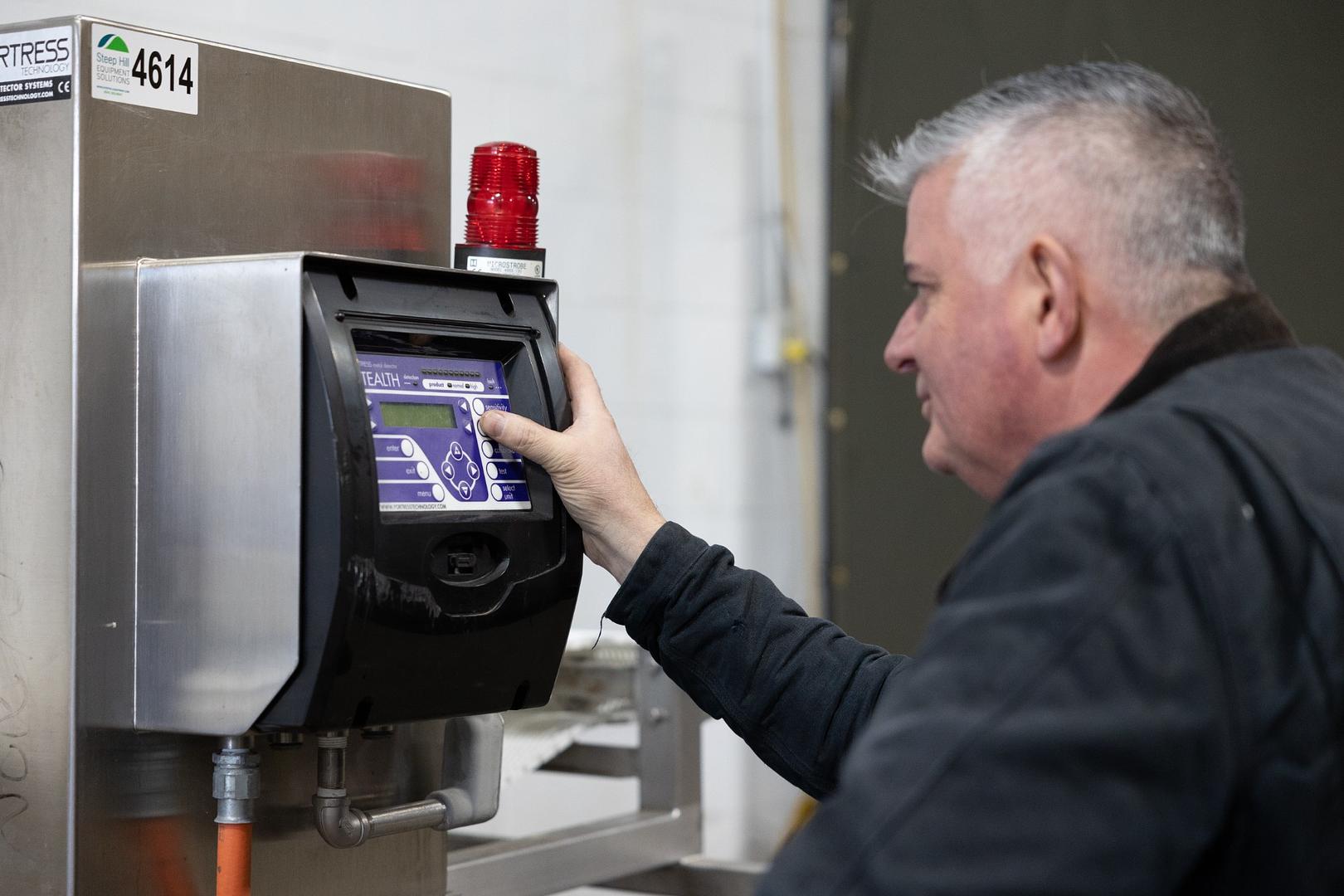USED PROCESSING AND
PACKAGING EQUIPMENT LEADERS

Inside the Machine: How VFFS Systems Automate Packaging
Vertical Form Fill Seal (VFFS) machines are a cornerstone of modern packaging, automating the process of forming, filling, and sealing bags for a wide range of products—from snacks and powders to liquids and granules. Their efficiency, versatility, and cost-effectiveness make them a popular choice across industries such as food, pharmaceuticals, and chemicals. Here’s a detailed look at how VFFS machines work.
The VFFS Process: Step by Step
1. Film Unwinding and Transport
The process begins with a roll of packaging film, typically made from plastic or laminate materials. The film is unwound and guided through a series of rollers that maintain proper tension and alignment, ensuring smooth movement and preventing wrinkles or misalignment that could lead to defective bags.
2. Forming the Bag
The flat film is then directed over a cone-shaped forming tube. As the film wraps around the tube, it is shaped into a cylindrical structure. The forming tube’s design determines the width of the bag, while the machine controls the length. The film’s edges are brought together and sealed vertically, creating a continuous tube.
There are two main types of vertical seals:
- Lap Seal: The film edges overlap and are sealed together, using less material.
- Fin Seal: The inside surfaces of the film are sealed together, often used for films with special barrier layers.
3. Vertical Sealing
A vertical sealing system applies heat or pressure to bond the film’s edges, forming a strong, continuous tube. This step is crucial for ensuring the integrity and strength of the final package.
4. Filling the Bag
Once the tube is formed, the product is dispensed into it through the forming tube. The filling system varies depending on the product:
- Volumetric cup fillers for free-flowing granules like rice or sugar.
- Auger fillers for powders such as flour or spices.
- Pump fillers for liquids.
The dosing system is synchronized with the bagging process to ensure accurate and consistent filling.
5. Horizontal Sealing and Cutting
After filling, the machine creates horizontal seals above and below the product, forming the top of one bag and the bottom of the next. A cutting mechanism then separates the individual bags. This process is continuous, allowing for high-speed operation—some machines can produce up to 200 bags per minute.
6. Discharge and Finishing Touches
The finished bags are discharged from the machine, ready for further processing, packaging, or shipment. Additional features such as date/batch coding, tear notches, or hanging holes can be added as needed.
Types of VFFS Machines
- Pneumatic VFFS Machines: Use compressed air for sealing and cutting. They are reliable and cost-effective, ideal for small to medium operations, but may have lower speed and precision.
- Servo-Driven VFFS Machines: Use electric motors for greater speed, accuracy, and flexibility, suitable for high-volume or complex packaging needs.
Advantages of VFFS Machines
- Versatility: Can handle a wide range of products and bag types.
- Efficiency: Automates multiple steps, reducing labor and material costs.
- Customization: Easily adjustable for different bag sizes and features.
In summary, VFFS machines streamline the packaging process by forming, filling, and sealing bags in a vertical, automated sequence. Their adaptability and speed make them an essential asset for any business looking to optimize packaging operations.
